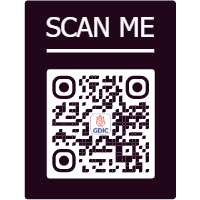Learn about brain stroke types, symptoms, and risk factors for effective prevention and recovery.
A stroke is a medical emergency that occurs when there is not enough blood reaching part of your brain. This is most often caused by a blocked artery or bleeding in your brain. Without a constant supply of blood, brain cells in that area of the brain begin to die from a lack of oxygen.
A test is utilized to assist in establishing an identification of what disease it is that the patient has suffered from, according to their signs and symptoms. Diagnostic tests can also assist in planning the right treatment, in assessing success with treatment, and in providing a prognosis.
What is a brain stroke?
A brain stroke is similar to a traffic congestion in your brain. The blood, which provides oxygen and nourishment to your brain cells, congests or leaks. It kills brain cells, causing complications such as weakness, numbness, difficulty with speech, and vision issues.
Physicians make images of your brain with specialized equipment to decide whether there's a blockage or bleeding. They might even take blood samples to search for other disorders that can increase your risk of having a stroke. Early diagnosis and treatment are hugely important to keep brain cells from dying and improving recovery.
Two kinds of stroke
- Ischemic Stroke: It is the most prevalent form, which happens when a clot blocks the passage of blood to the brain.
- Hemorrhagic Stroke: It happens due to a rupture in one of the blood vessels of the brain, leading to bleeding.
How to diagnose it early?
Prompt treatment and diagnosis are very important in avoiding brain damage and enhancing recovery chances. Various tests are used to confirm a stroke has occurred and what caused it.
Important diagnostic tests
CT Scan (Book Now)
- A CT scan relies on X-rays to obtain images of the brain.
- It can be used to detect bleeding in the brain, a characteristic of hemorrhagic stroke.
- It can also look for indications of an ischemic stroke, including decreased flow of blood into sections of the brain.
MRI Scan (Book Now)
- Radio waves and a powerful magnet employ an MRI to generate images of the brain in detail.
- It may potentially be capable of observing subtle changes of brain tissue, which are not observable on CT scanning.
- It can detect how extensive and where brain damage is and brain damage resulting from any underlying pathologic condition.
Blood Tests (Book Now)
- Blood tests are most valuable in detecting individuals at risk for stroke, such as those with high cholesterol, high blood pressure, and diabetes.
- They can also be used to exclude other disorders that have been discovered to mimic stroke.
Carotid Ultrasound (Book Now)
- A screening using the technique of sound wave application to take pictures of the carotid arteries of the neck, which supply blood to the brain.
- It can detect plaque buildup or blockage in the arteries, making one vulnerable to stroke.
Echocardiogram (Book Now)
An echocardiogram employs the use of sound waves to produce images of the heart.
It can detect heart disease like atrial fibrillation, a cause of stroke.
Other tests that you can book for brain stroke at Ganesh Diagnostic and Imaging Centre-
Here are some other tests that you can book for brian stroke-
- Brain CT scan (Book Now)
- Magnetic resonance imaging (MRI) brain Test (Book Now)
- Computed tomographic (CT) brain angiography Test (Book Now)
- Magnetic resonance angiography (MRA) Tests (Book Now)
- Doppler sonography (carotid ultrasound) (Book Now)
- Electrocardiogram (ECG) (Book Now)
Risk Factors for Brain Stroke
It is essential to understand the risk factors of stroke in order to avoid it. Some of the major risk factors are
- High Blood Pressure: It is the greatest risk factor.
- High Cholesterol: High levels of LDL cholesterol can cause the formation of plaques in arteries.
- Heart Disease:
Frequently Asked Questions
Q. How to detect a brain stroke
Cerebral hemorrhage or brain cell damage caused by a stroke. Magnetic Resonance Imaging (MRI) captures images of your brain by using magnets and radio waves. MRI can substitute — or complement — a CT scan in diagnosing a stroke.
Q. What is best for stroke?
Computer tomography (CT) scan: A CT scan employs X-rays while capturing the image of the brain. A head CT usually is one of the initial investigations in the case of a stroke.
Q. Which drug avoids stroke?
Antiplatelet drugs, statins, and antihypertensive drugs are the mainstays of drug therapy for secondary prevention of stroke.
Q. Do you 100% recover after a stroke?
Recovery from the stroke may take weeks, months, or years. Some will be disabled for the rest of their lives, and others will be completely recovered.









